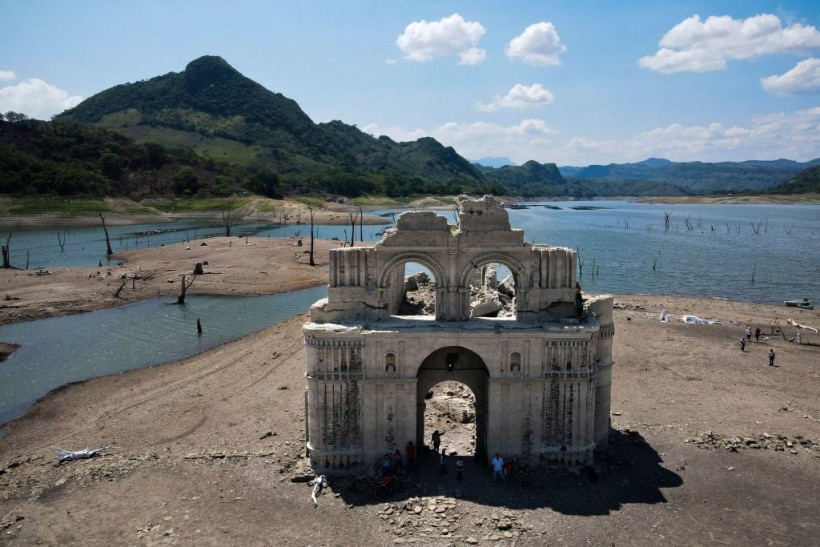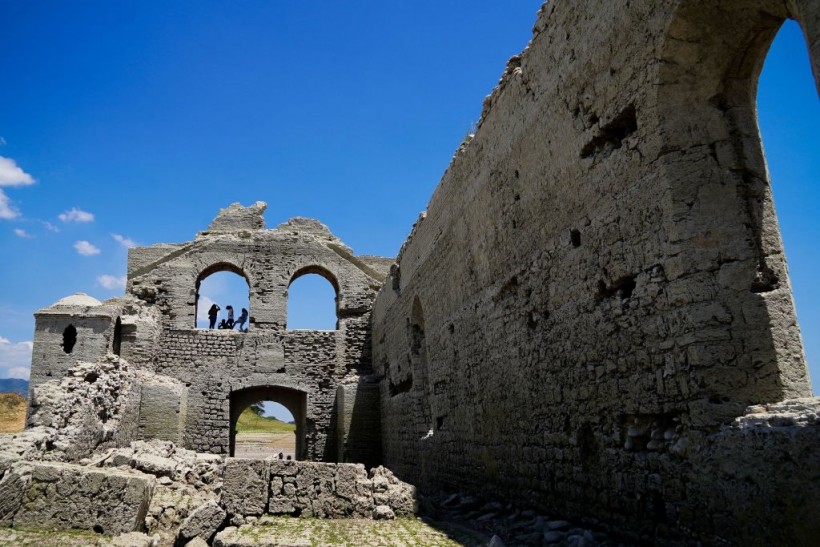
Aerial view of the Temple of Quechula church. A recent report showed that a 16th Century Church, The Temple of Quechula, emerged in drought-stricken South Mexico Lake. The low water levels could likely impact local fishermen in the area.
After experiencing intense drought conditions, a recent report revealed that a 16th-century church, the Temple of Quechula, emerged in the Nezahualcoyotl reservoir in South Mexico.
Recently, Reuters reported that parts of Mexico experienced challenging heatwaves, causing six casualties due to the hot conditions in the country.
Due to the challenging heat, Mexicans were advised to take precautions. Meanwhile, the dry and heat likely worsened the drought.
According to AccuWeather, parts of Chiapas in Mexico had experienced drought conditions for about six months. The drought impacted the Nezahualcoyotl reservoir, which reached low water levels.
Drought conditions in Mexico and entire view of church
In the latest AccuWeather and Newsweek reports, a 16th-century church named the Temple of Quechula emerged due to the low water levels in the said reservoir and lack of rainfall.
During the 16th century, the church was a home for the Zoque people that Friar Bartolome de la Casas led.
The reports noted that the drought conditions helped resurface the Roman Catholic church, which was submerged before.
Unlike before, they could travel by boat, and the scene became different. People could see and walk to the church's 30-foot tall wall and bell tower.
AccuWeather reported that the water levels in the reservoir declined five months ago, as the wet season became unusually dry in 2022, which affected the water storage.
In the report, architect Carlos Navarrete explained that the church was abandoned in 1773 - 1776 due to the plagues.
Impact on local fishermen

People visit the Temple of Quechula
Although the view is magnificent, the drought conditions and low water levels in the reservoir have impacted the local fishermen.
According to the Newsweek report, the drop in the water could affect the fish. Drought conditions have a significant toll on farmers and fishermen.
Lost village in Spanish reservoir
Furthermore, AccuWeather and Reuters reported a lost village of Aceredo in the Limia River, becoming a tourist attraction in the area.
The reports explained that the drought and lack of rainfall helped unfold the ancient village submerged when the Alto Lindoso reservoir was built.
Also Read: Northeast Weather Forecast: Poor Air Quality to Emerge Due to Dry Conditions, Canadian Smoke
The report said that the ancient village had been submerged in the water for more than 20 years that suddenly emerged due to drought.
Challenging temperatures and drought
As lack of rainfall and soaring temperatures continue in Mexico, it could likely result in heat-related health concerns.
It is best that Mexicans should keep updated with the weather conditions, as heat waves could become dangerous for vulnerable people.
Outdoor workers, older adults, people with medical conditions and children are at risk of the hot weather in Mexico.
Furthermore, it is best to stay hydrated at all times. Bringing bottled water is essential when traveling to tourist areas or enjoying outdoor activities.
Staying in cooler areas is also suggested to ease the troublesome heat in Mexico.
Related Article: Family Dies Inside Car With Running AC as Heat Wave Impacts Mexico
For more similar stories, don't forget to follow Nature World News.
© 2024 NatureWorldNews.com All rights reserved. Do not reproduce without permission.





